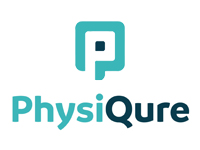Physiotherapy has proven to be beneficial for stroke patients. It can help patients overcome pain, muscle stiffness, spasticity, and sensation deficits. Physical therapy should be performed by a certified provider who can address the specific needs of stroke patients. Depending on the extent of the stroke and its effects, therapy may involve performing tasks such as sitting up in a chair for 45 minutes. Rehabilitation may also be done using specific equipment such as a physiotherapy chair.
Rehabilitation therapy is typically started within 48 hours of the stroke. Early sessions focus on promoting independence and range of motion. This helps patients strengthen their muscle groups and improve mobility. Patients may need to learn how to sit up, transfer from a bed to a chair, or walk. These early exercises are critical steps in regaining independence. As a result of stroke rehabilitation, a patient may require more than one session.
After a stroke, survivors may experience muscle spasms, balance problems, and joint pain. Physiotherapy sessions can help stroke survivors regain their mobility, control pain, and reestablish confidence. Regular physiotherapy sessions may involve exercises, stretching, and walking, and may also include training for assistive devices, such as a walker. It’s crucial for survivors to engage in regular physical therapy after a stroke.
